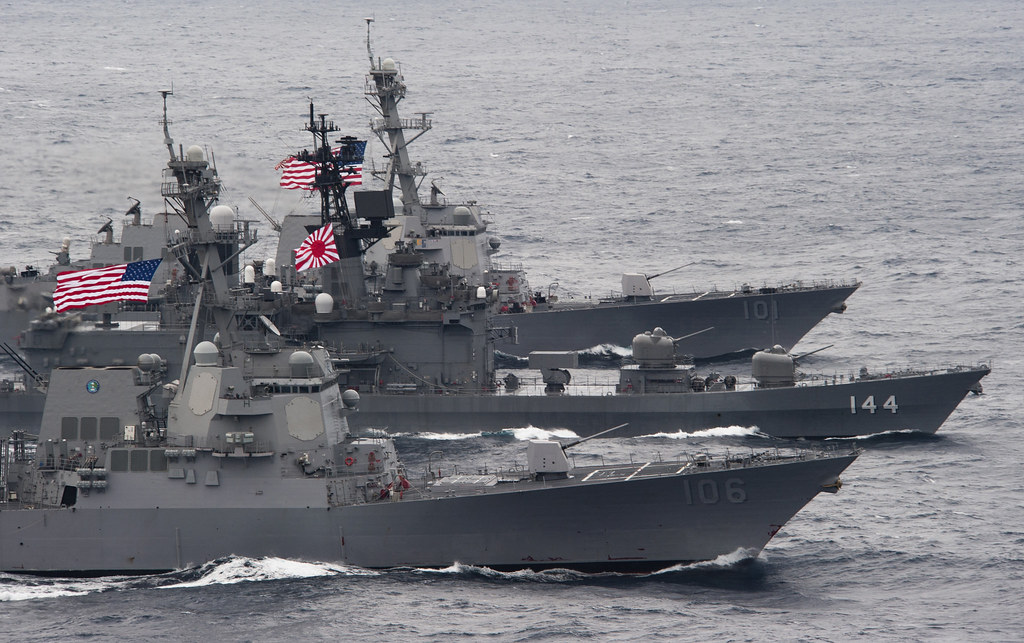 |
| Image: Flickr User - Official U.S. Navy Page |
By Jim Garamone
DoD News, Defense Media Activity
NEW YORK, April 27, 2015 – The new U.S.-Japan defense guidelines will fundamentally change the way Japan and the United States cooperate on defense matters, a senior defense official said recently.
The official spoke on background in advance of today’s release, calling the guidelines “a big deal” for both countries. The guidelines are the foundation on which the United States and Japan base their cooperation as allies.
“It’s a big deal because the region has changed since we last revised the guidelines in 1997,” the official said. “It’s a big deal because [as] Japanese capabilities have increased, Japan’s ability to contribute to regional peace and stability has increased.”
The new guidelines come on the heels of Japan’s reinterpretation of their constitution in July 2014.
Collective Self-Defense
Under the reinterpretation, Japan will be able to defend other countries that may come under attack. “This is the exercise of collective self-defense,” the official said.
The new guidelines allow for increased regional and global cooperation in the U.S.-Japanese alliance. This will be most noticeable in peacekeeping operations, humanitarian assistance and disaster relief, international intelligence, surveillance and reconnaissance operations, missile defense and a variety of other areas, the official noted.
There will also be an increase in U.S.-Japan alliance cooperation in new domains like cyber and space, the official said, adding that this means increased cooperation in space situational awareness, bolstering the resiliency of space systems and cooperative early warning.
In cyber, the two countries will share more information on threats and vulnerabilities. “You will see us working together to assure the resiliency of critical infrastructure in defense and elsewhere,” he said.
The guidelines also seek to improve coordination between the U.S. and Japan.
“We will be establishing a standing alliance coordination mechanism, which will operate from the cabinet level down and will include representatives from the foreign and defense ministries, as well as from the militaries,” the official explained. “This new coordinating body will help us cooperate together more seamlessly and more effectively as allies.”
Improved Regional Operations Ability
The body can also include members from other agencies and departments as the need arises, the official noted.
The new guidelines mean Japan can now defend U.S. ships engaged in missile defense activities in the vicinity of Japan, he said. Japan can also respond to attacks on third countries if they are in close association with Japan and if those attacks directly affect Japanese security. Japan and the United States will coordinate and share information more closely in missile defense, and Japan will be able to shoot down missiles headed for U.S. territory, the official said.
It’s a real change and improvement in the ability of the alliance to operate together, not only in defense of Japan, but throughout the region and globally, he said.
The first set of defense guidelines was issued in 1978 and was aimed at the immediate defense of Japan. These were amended in 1997 and that expanded U.S.-Japanese ability to cooperate regionally into situations and areas surrounding Japan.
“These guidelines eliminate the geographic restrictions on U.S. and Japan cooperation so we’ll be able to do globally what we’ve been able to do in Japan and regionally as well,” the defense official said.
Related Stories:
